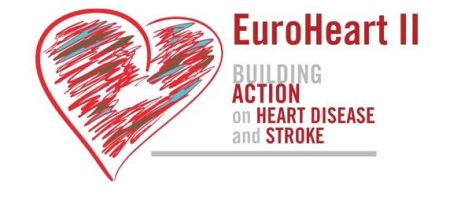Following three years of research into current cardiovascular disease (CVD) trends and the analysis of EU-wide CVD prevention policies, the EU-funded EuroHeart (European Heart Health Strategy) II Project has been concluded.
The project determined best practices and policy initiatives for the promotion of cardiovascular health in Europe and was developed and implemented by the European Heart Network (EHN) in collaboration with 29 partner organisations from 17 countries, including research centres, academia, NGOs and health professionals - namely the European Society of Cardiology (ESC).
EuroHeart II follows up on its predecessor, EuroHeart I (2003 – 2008), and demonstrated the continuing high burden of CVD, still Europe’s N°1 killer. The 2012 European Cardiovascular Disease Statistics, elaborated by Oxford University within the project, indicate that close to 2 million people die from CVD in the EU yearly, and 4 million in Europe overall. The statistics also identify a rise in the overall financial burden caused by CVD, estimated to have a EU economy price tag of over € 196 billion every year.
The project uncovers that previously decreasing mortality rates in certain population groups across several EU countries are leveling out.
In combination with the Europe-wide obesity and diabetes rise, and the plateauing of decreases in blood pressure and blood cholesterol, this fact underlines the importance for policymakers to act now, avoiding a reversal in the CVD mortality decline observed over many years.
Additionally, the EuroHeart II project also highlights the vast scope for reducing CVD by lowering cardiovascular risk factors at population level. Dietary salt, saturated fat and tobacco could reduce coronary heart disease (CHD) mortality substantially by up to one third in each country. Adoption, implementation and evaluation of effective policies remain patchy and variable, however.
After a European conference, Germany, Italy and Slovakia organised regional conferences, with the aim to inform a wider stakeholder base of the evidence on food, nutrition and physical activity, their impact on CVD and the policies needed to change current patterns.
During seven subsequent national meetings, policy recommendations were reviewed by representatives of health organisations, nutritionists, physical activity experts and representatives from national ministries, which also involved patients through capacity-building seminars.
Ms Susanne Løgstrup, Director of EHN, wrote in her review of the work pursued within the framework of EuroHeart II, that the outcomes of the project would contribute significantly to the European Union’s health programme ‘Together for Health’. If acted upon, the research findings and their accompanying policy recommendations had the potential to reduce the burden of cardiovascular diseases in Europe, subsequently achieving the global 2025 target of reducing mortality from chronic non-communicable diseases by 25%.
Professor Frans Van de Werf, Chairman of the ESC European Affairs Committee, described the EuroHeart II project as a new milestone in the fight against cardiovascular disease which brought additional and concrete evidence towards the need of EU-wide policy actions as well as a dedicated strategy for CVD prevention.
Source: European Society of Cardiology
12 March 2014
Latest Articles
Cardiology, ESC, EuroHeart, CVD, EHN, project
Following three years of research into current cardiovascular disease (CVD) trends and the analysis of EU-wide CVD prevention policies, the EU-funded EuroH...



























